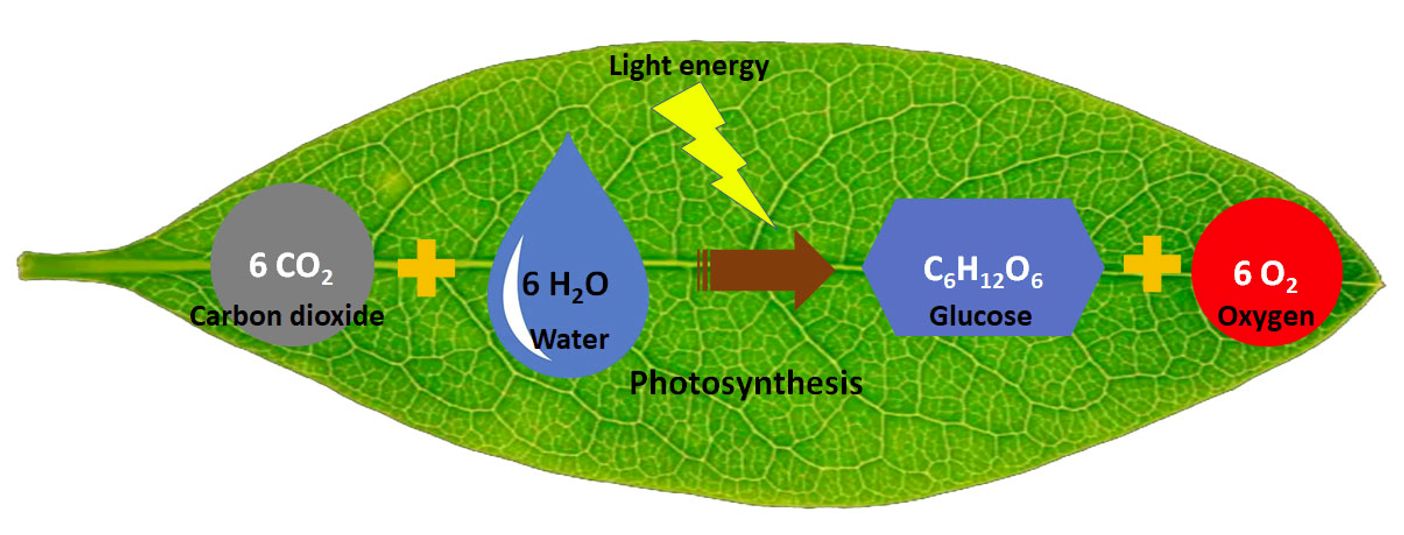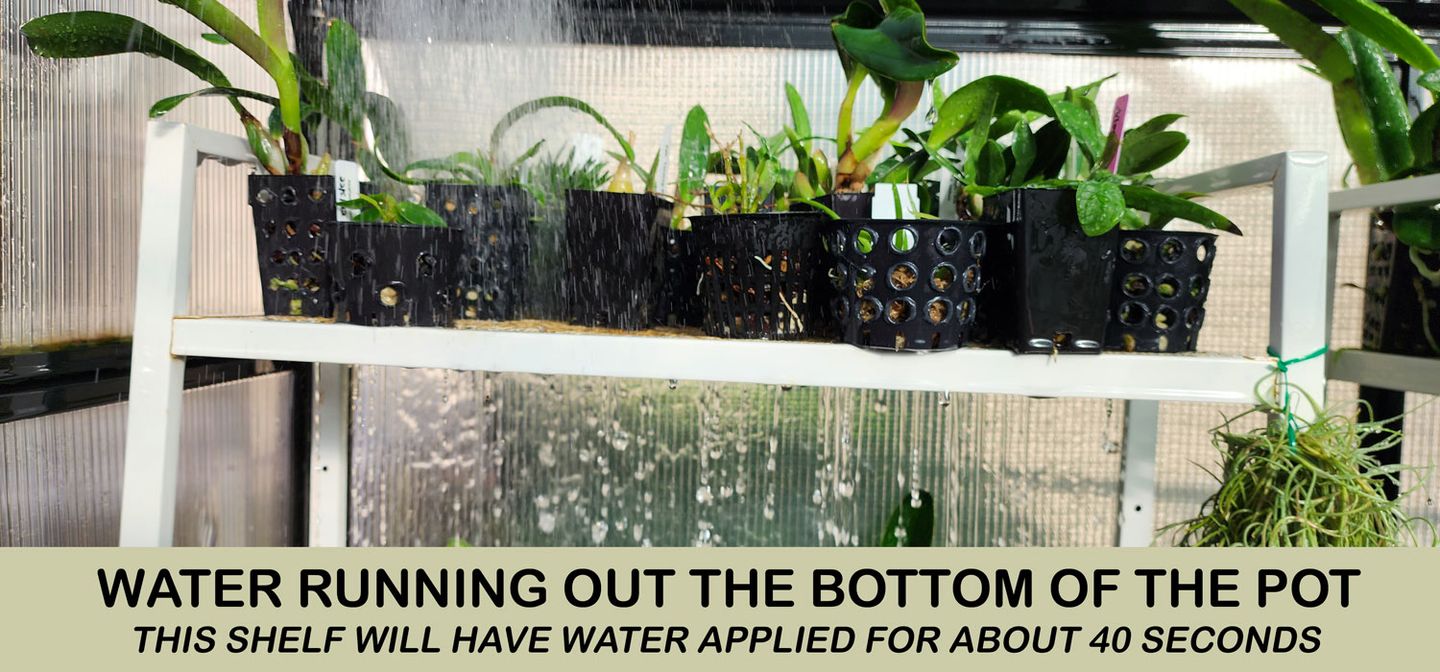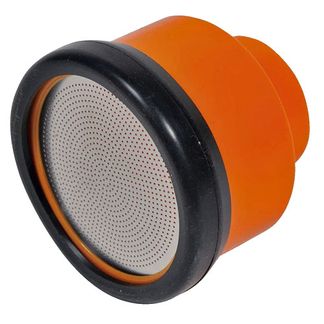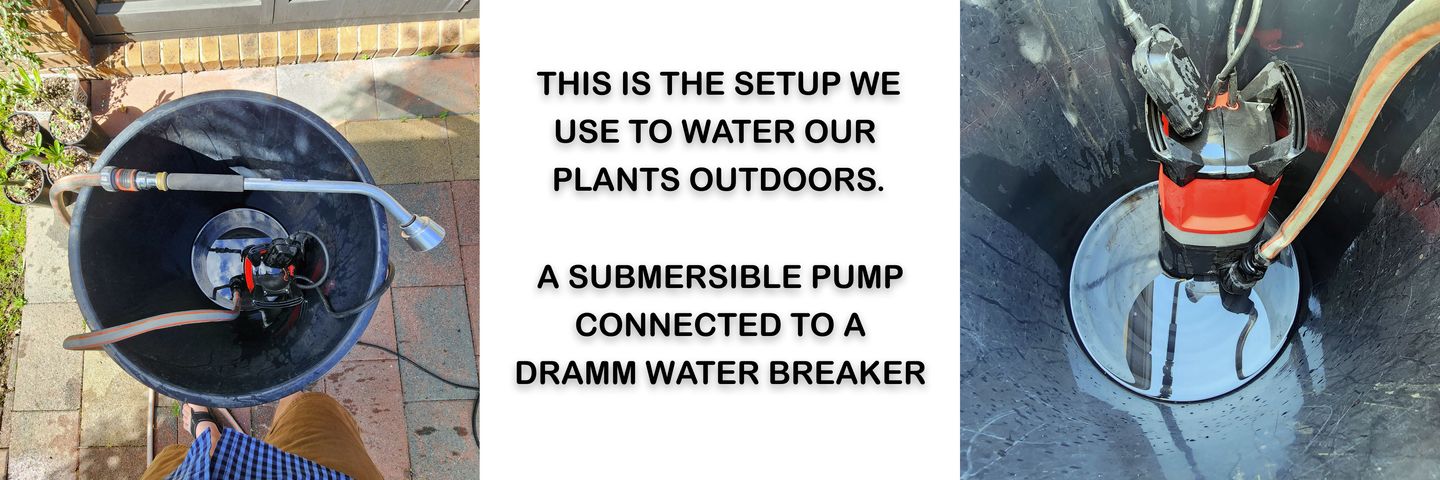How Flushing Potting Mix Can Transform The Growth Of Your Indoor Plants!
Indoor plants have become increasingly popular and, add aesthetic appeal, offer a range of physical and mental health benefits. These versatile green companions can instantly transform any living space into a vibrant, refreshing environment.
The above paragraph may not describe how your plants are growing, and regular flushing of the potting mix may be one thing that will improve the growth of your plants.
By regularly flushing our plants, we have witnessed a remarkable improvement in their health and growth. They have developed a lovely fresh green appearance and are growing well.
One of the reasons for the improvement in our plants is that regular flushing improves the integrity of the potting mix. It removes the build-up of root exudates, unused fertiliser salts, stale air, draws in fresh air, and may remove some finer particles from the decayed potting mix. This creates an environment for good root growth which in turn can improve the growth and overall health of plants.
The Impact of Potting Mix on Plant Growth and Photosynthesis

The physical and chemical properties of the potting mix you use may affect the health and growth of your plant's roots. A well-developed, healthy root mass is required to support the development of the aerial parts of your plants (stems, leaves, petioles, flowers, fruit and seeds).
The by-products of photosynthesis are what plants use to produce cellular structures (growth). One of the ingredients required for this chemical reaction to occur is water.
It is fair to reason that if moisture is undersupplied, the rate of photosynthesis will be reduced, i.e., reduced growth.
One of the keys to maximising the rate of photosynthesis is to manage how much moisture a plant has access to. House plant growers (pot plant growers) do this by managing how frequently water is applied to the potting mix and selecting a potting mix that retains enough moisture without becoming waterlogged.
The above decision will be influenced by the type of plant we are growing. Some plants prefer dryer potting soil, others a moist potting mix, and others somewhere in between.
The water-holding capacity of a potting mix is influenced by three properties: drainage, structure, and the water-holding capacity of the potting mix ingredients.
- Drainage: Good drainage is essential for a healthy potting mix. Adequate drainage allows excess water to flow out of the mix, preventing waterlogging. If the mix retains too much water and does not drain well, it can lead to soggy conditions that may harm plant roots.
- Structure: The structure of the potting mix refers to the arrangement and size of the particles within it. A mix with good structure strikes a balance between water retention and drainage. A well-structured mix allows water to move through it easily, ensuring proper distribution and availability to plant roots.
- The water-holding capacity of the ingredients: The water-holding capacity of the individual components used in the potting mix also affects its overall water-holding capacity. Different ingredients, such as peat moss, vermiculite, perlite, or coconut coir, have varying water-holding properties. Some ingredients can retain more water, while others may facilitate better drainage.
By considering these three properties and creating an optimal balance, gardeners can ensure a potting mix that provides adequate moisture to plants while preventing waterlogged conditions.
Considering the above, there may be a better approach than using any old potting mix. Bio Leaf potting mixes have been designed with the above in mind. It should retain enough water for plant growth without causing waterlogging or drought.
Water: The Essential Catalyst for Photosynthesis and Plant Health
Photosynthesis in plants relies heavily on water availability. It's the process where plants transform sunlight into energy, needing sunlight, carbon dioxide, and water.
Here's why water is vital:
- Water provides electrons for energy production during photosynthesis. It splits in a process called photolysis, creating electrons that help produce ATP and NADPH, two energy carriers for further photosynthesis stages.
- Water aids in gas exchange by allowing plants to take in carbon dioxide and release oxygen through leaf openings called stomata. If water is scarce, stomata may close to save water, limiting carbon dioxide intake and slowing photosynthesis.
- Water supports plant structure by maintaining cell fullness, helping non-woody plants stand upright. This allows more sunlight exposure and enhances photosynthesis.
- Water helps transport nutrients within the plant. It dissolves soil nutrients that the roots absorb and transport to the plant parts, including the chloroplasts, for photosynthesis.
Insufficient water can halt photosynthesis, reducing energy production and growth. Hence, keeping potting mix well-watered is important for efficient photosynthesis and good plant health. But remember, while watering is necessary, overwatering can also harm plants, so maintain a balance.

Telltale Signs of an 'Unhealthy' Potting Mix.
An unhealthy potting mix can be identified through visual cues from the plant or by testing the potting mix itself. Visual signs that the integrity of your potting mix has been compromised include:
- Yellowing leaves.
- Black tips on the leaves.
- Stunted growth.
- Root rot.
- Mould and algae growth on the potting mix surface.
- Heavy whitish salt deposits on the surface of the potting mix.
Another method of checking the integrity of your potting mix is to test it by measuring the salt levels and the pH of a sample of distilled water poured through the potting mix or by doing a 1 to 2 soak test.
You can download a document from Cornell University on how to do this test.
The Crucial Role of Healthy Roots in Plant Growth.
Plant roots have a crucial role in the overall health and development of plants. A healthy root mass is one of the foundations for growing thriving pot plants. I have often meditated on the fact that, as indoor plant growers, we should focus on growing roots first and foliage second and not foliage first, as many of us are inclined to do.
To understand why roots are important, listed below are some of the primary functions of a plants root system:
- Anchorage and support: Roots help anchor the plant firmly in the soil or growing medium, providing stability and support. This is especially important for potted plants, as the limited space in pots can make them more susceptible to tipping over.
- Absorption of water and nutrients: Roots absorb water and essential nutrients from the growing medium, which are transported to other parts of the plant for growth and development (photosynthesis). The root hairs are tiny extensions of the root surface, increasing the surface area for absorption.
- Storage of nutrients and energy: Roots can store food reserves in the form of carbohydrates (starch), such as starch, which can be used during periods of limited resources or when the plant needs an energy boost for growth and reproduction.
- Hormone production: Roots synthesise certain plant hormones, such as auxins and cytokinins, which are involved in regulating various aspects of plant growth and development, including cell division, elongation, and differentiation.
- Gas exchange: Although less significant in indoor plants compared to outdoor plants, roots still participate in gas exchange, taking in oxygen for respiration and releasing carbon dioxide as a by-product.
- Microbial interactions: Roots interact with various microorganisms in the growing medium, forming relationships that can benefit the plant and microorganisms. For example, mycorrhizal fungi form associations with plant roots, helping them absorb nutrients more efficiently.
- Response to environmental stimuli: Roots can sense and respond to various environmental factors, such as gravity, light, moisture, and nutrient availability. This allows them to grow and adapt to their surroundings in order to optimise resource uptake and overall plant health.
To ensure proper root functions for pot plants, provide well-draining soil, adequate moisture, and appropriate nutrient levels.
Plants make their own food.
Plants are called autotrophs, which means they make their own food through the process of photosynthesis. Photosynthesis is the process whereby plants use sunlight, carbon dioxide and water to produce food in the form of glucose and oxygen as a byproduct.
We know that water is required for photosynthesis. A potting mix's properties greatly influence how much water is available for plant roots to absorb and use for photosynthesis.
Flushing your potting mix with water regularly directly influences the growth and health of your plants. It supplies water to the plants. It helps to 'clean' the potting mix by flushing away unwanted exudates, salts and other particles. This, in turn, increases the propensity for your plants to develop and healthy root mass.
Roots are the foundation for growing healthy, productive plants – no roots, no shoots.
Unfortunately, indoor plants or pot plants are susceptible to not being flushed regularly because of the difficulty of flushing plants growing indoors.
Clean the Potting Mix: Flush Away Exudates and Excess Salts.
Plants need a toilet and deposit their waste in the potting mix. These root exudates can accumulate in the potting mix over time.
Similarly, unused fertiliser salts can also build up in the potting mix.
The build-up of microbial waste in potting mix can also affect the integrity of the potting mix.
Additionally, certain microbial activities can break down components of the potting mix, which also build up and alter the properties of the potting mix.
The combination of any of the above can negatively affect the integrity of the potting mix by changing its physical and chemical properties. This may cause the potting mix to become soggy and hold too much water changing the pH and affecting nutrient absorption, and may cause damage to roots.
Regularly flushing the potting mix helps to wash away these unwanted substances, which helps to maintain the quality of the potting mix.
You can flush with your fertiliser added to the water. I use both. Sometimes I flush with plain water and sometimes with a nutrient solution. If you are using a good quality fertiliser at the correct dosage, most of the fertiliser salts should be absorbed by the roots. Dyna Gro Nutrient Solutions are formulated to fit these criteria.
Roots Need to Breath. Give them Air!
Air is important in keeping plant roots healthy and promoting their growth. Oxygen, found in the air, is necessary for roots to perform cellular respiration. This process helps generate the energy required for nutrient absorption and growth.
At the same time, roots give off carbon dioxide as a waste product from respiration. Proper air circulation around the roots helps remove the built-up carbon dioxide and maintain a steady oxygen supply.
The action of water flowing through the potting mix (flushing) pushes out stale air and draws fresh air, thus improving the availability of fresh air through the potting mix.
The lack of fresh air may contribute to the potting mix developing anaerobic conditions, resulting in root diseases or rot.
The Importance of Flushing: How We Flush Our Plants.
We feed our orchids and house plants weekly and water them several times a week. Our watering frequency changes through the year more applications during summer and less during winter. For our orchids, every water application is a flush. For house plants, we try to flush once a week in summer and once every two weeks in winter.
We flood the pots to thoroughly wet the potting mix and allow sufficient water to flow through the potting mix so that an abundance of water flows out the bottom of the pots. Sometimes we will do a second application of water.
For our houseplants, this can be quite a task, as we take each plant outside for this purpose. Consequently, we are reducing the number of houseplants we own.

The Equipment We Use

Our equipment consists of a wand and hose pipe, with a Dramm Water Breaker attached. This water breaker is specifically designed to deliver a high volume of water gently, i.e. low impact on plants. The design of the nozzle allows for the flow of water to mimic rainfall and contributes to the action of a high volume of water to flush the potting mix.
The rose pattern of the water breaker not only improves airflow into the potting mix but also allows for high-volume water distribution without harming the plants.
For general watering (flushing) we attach the Dram Water Breaker to a garden hose and when we feed use a drum and a submersible pump to wich we attach we mix up 120 litres of water and attach the Dram Water Breaker.

A Note About Fertiliser.
Choosing the right fertiliser and using the correct amount is important. A good quality fertiliser allows you to use sufficient while providing enough nutrients for healthy plant growth. This can help prevent the build-up of fertiliser salts in the soil. Some fertilisers require high doses to encourage growth, but this can lead to salt build-up in the soil.
With Dyna Gro fertiliser, you can get good results by mixing 1 ml with 1.5 litres of water and using it once a week.
Plants need 20 nutrients to grow and maintain health. Dyna Gro Nutrient Solutions provides 16 (or 17 if you add Pro-TeKt) of these essential nutrients. The plant takes the last 3 nutrients—carbon, oxygen, and hydrogen—from the air and water. This makes Dyna Gro Nutrient Solutions a complete formula for plant growth.
Finally, the Benefits of Flushing Potting Mix Often.
Regularly flushing your indoor plant's potting mix offers several advantages:
- Helps to keep plants growing: Water is required for photosynthesis (growth). Having a good supply of water is important for efficient photosynthesis.
- Helps to remove excess salts: Over time, salts can build up in potting mix due to fertilizers and minerals in the water. These salts can harm plant roots and interfere with nutrient uptake. Flushing the mix with water can help to dissolve and wash away these excess salts.
- Improves the pH of the potting mix: Nutrient absorption is affected if the potting mix becomes too acidic or too alkaline. Flushing the mix with water can help to bring the pH to a level that is more suitable for nutrient absorption.
- Prevents the build-up of harmful substances: If there are any harmful substances in the potting mix, such as chemicals or disease pathogens, flushing the mix can help to remove them.
- It can decrease waterlogging: Overwatering can lead to waterlogged soil, which can suffocate plant roots and lead to root rot. Flushing the mix with water can help to improve drainage and prevent waterlogging.
- Refreshing the Mix: Over time, organic matter in potting mix can break down, and the mix can become compacted. Flushing the mix with water can help to refresh it and improve its structure, making it more conducive to plant growth
We started to see results after about 6 weeks of doing weekly flushes.
Happy watering.
